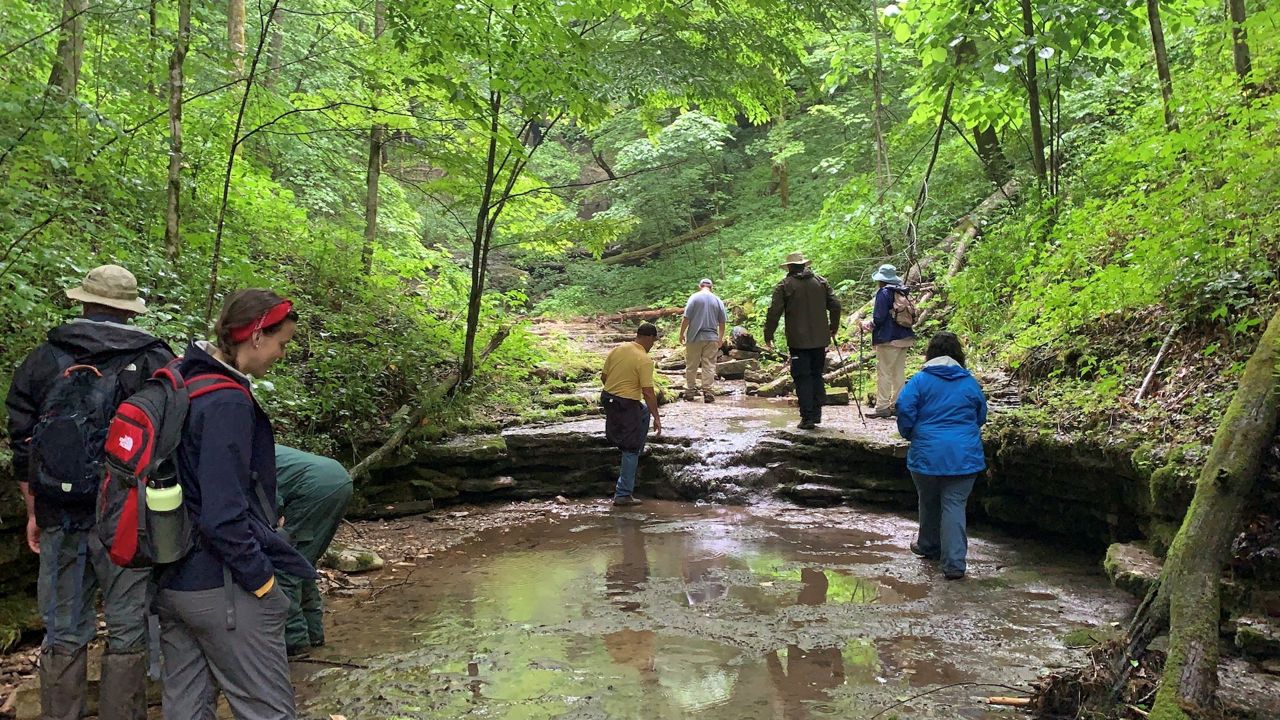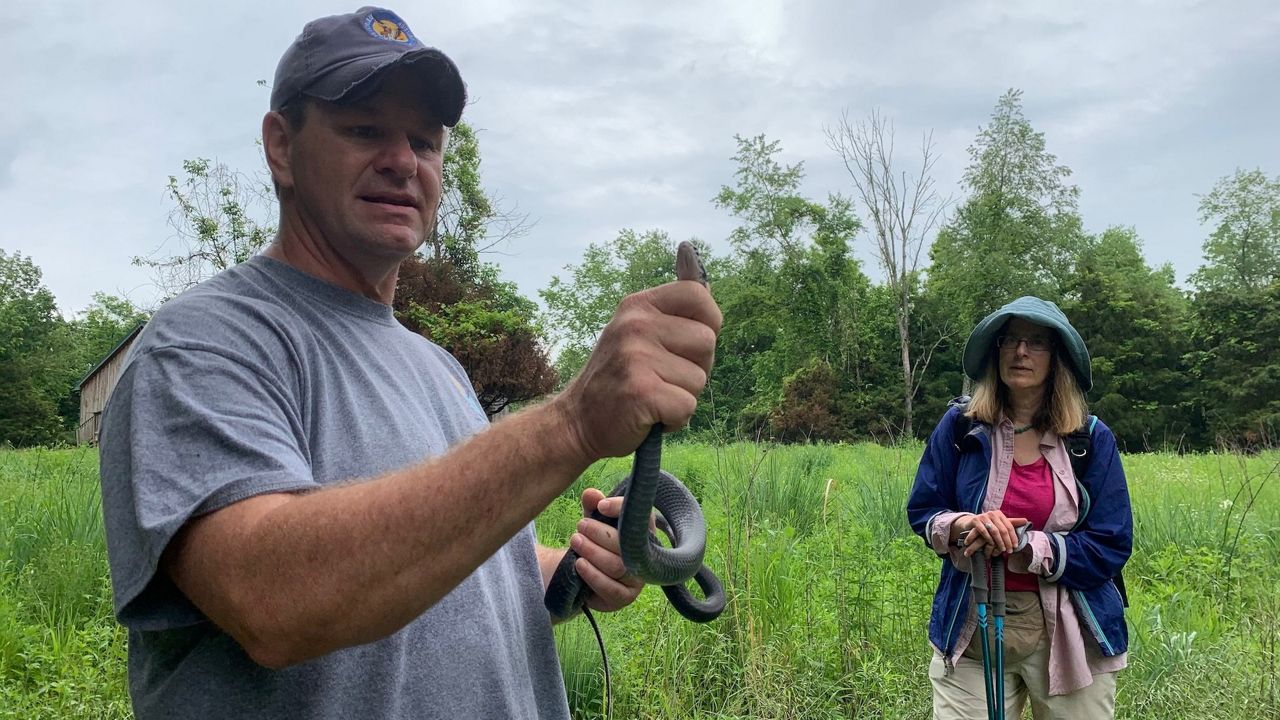LEXINGTON, Ky. — Walking in the woods with wildlife experts is a unique experience. On a rainy June morning at the Floracliff Nature Preserve, you could see sun rays fighting to shine through a dense tree canopy.
Looking around, you would see scientists and tour guides bending over into bushes with glee – overturning rocks and then placing them back gently. Their aim was far more precise than a gaze into the sun.
"I found another one!" exclaimed one young woman as she nearly dove into an embankment to capture a salamander.

More than a dozen state and local scientists with various areas of expertise came to the preserve to tour some of its 360 acres and collect data on plants and animals – data, terrestrial zoologist Shelby Fulton explained, that can mean much more than numbers.
"We can’t necessarily always say, 'This is the exact value of this species. This is the dollar amount that this species is saving us,'" she remarked. "Unfortunately, we don’t learn that information until it’s too late."

In other words, count every animal, whether endangered or abundant, because some day an abundant creature could become endangered. If scientists have data on that species, they can be better prepared to bring it back from the brink.
The preserve, itself, is a rarity. It sits on the outskirts of Lexington but, to Zeb Weese, it's a portal to another time.
"A place like this, for instance, is about the only place in Fayette County you’re gonna come that’s gonna look kinda like what it looked like in the early 1700s when the pioneers and the settles first made it to this area," Weese explained. He's the executive director of the Office of Kentucky Nature Preserves.
Winding through the woods, the group reached the highlight of the trip: a breathtaking calcium carbonate formation - a "frozen waterfall" to laymen. They’re told they can stop for a break. Instead, they scatter to look for more tiny animals.
With Kentucky's wild sanctuaries as their office, they don’t seem in a hurry to punch out for the day.



